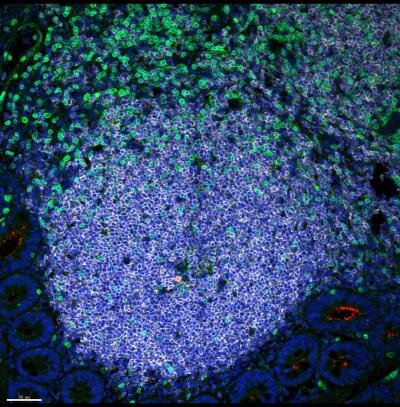#Elite soccer players are more likely to develop dementia, suggests new study

Table of Contents
“Elite soccer players are more likely to develop dementia, suggests new study”

Elite male soccer players were 1.5 times more likely to develop neurodegenerative disease than population controls, according to an observational study published in The Lancet Public Health journal.
Among male soccer players playing in the Swedish top division, 9% (537 out of 6,007) were diagnosed with neurodegenerative disease, compared to 6% (3,485 out of 56,168) population controls.
The soccer players were both amateur and professional. Sweden was a prominent soccer nation during the 20th century and many of the players from the top division were competing at the highest international level. However, due to ideals of sportsmanship and amateurism, soccer clubs in Sweden were not allowed to pay salaries to their soccer players until the late 1960s.
In recent years, there have been growing concerns about exposure to head trauma in soccer (soccer) and whether it can lead to increased risk of neurodegenerative disease later in life. A previous study from Scotland suggested that soccer players were 3.5 times more likely to develop neurodegenerative disease. Following this evidence, certain footballing associations implemented measures to reduce heading in younger age groups and training settings.
Peter Ueda, assistant professor at Karolinska Institutet, Sweden, says, “While the risk increase in our study is slightly smaller than in the previous study from Scotland, it confirms that elite [soccer players] have a greater risk of neurogenerative disease later in life. As there are growing calls from within the sport for greater measures to protect brain health, our study adds to the limited evidence base and can be used to guide decisions on how to manage these risks.”
The study used Sweden’s national health registers to look for records of neurodegenerative disease (diagnoses, deaths, or use of prescription drugs for dementia) in 6,007 male soccer players who had played in the Swedish top division from 1924 to 2019. It compared players’ risk of neurodegenerative disease with population controls, who were people matched with soccer players according to sex, age, and region of residence. The analysis broke down the risk for different neurogenerative conditions, including Alzheimer’s and other dementias, motor neuron disease, and Parkinson’s disease. It also compared the risks between outfield players and goalkeepers.
Overall, soccer players had a risk of neurogenerative disease 1.5 times that of controls. A total of 9% (537 out of 6,007) of soccer players compared to 6% (3485 out of 56,168) of controls were diagnosed with neurodegenerative disease.
The authors caution that although 9% of soccer players and 6% of controls were diagnosed with neurodegenerative disease during their study, most participants were still alive at the end of data collection, so the lifetime risks of developing neurodegenerative disease for both groups are likely to be higher.
The risk of neurodegenerative disease was 1.5 times higher for outfield players than controls but was not significantly higher for goalkeepers compared to controls. Accordingly, in a direct comparison, outfield players had a risk of neurodegenerative disease 1.4 times higher than that of goalkeepers.
Peter Ueda adds, “Importantly, our findings suggest that goalkeepers don’t have the same increased risk of neurodegenerative disease as outfield players. Goalkeepers rarely head the ball, unlike outfield players, but are exposed to similar environments and lifestyles during their [soccer] careers and perhaps also after retirement. It has been hypothesized that repetitive mild head trauma sustained through heading the ball is the reason [soccer] players are at increased risk, and it could be that the difference in neurodegenerative disease risk between these two types of players supports this theory.”
Soccer players had a risk of Alzheimer’s disease and other dementias 1.6 times that of controls—with 8% (491 out of 6,007) of soccer players being diagnosed with the condition compared to 5% (2889 out of 56,168) of controls.
There was no significant risk increase for soccer players versus controls observed for motor neuron disease, which includes ALS. The risk of Parkinson’s disease was lower among soccer players. Overall mortality was slightly lower among soccer players compared to the control group (40% versus 42%).
Björn Pasternak, senior researcher at Karolinska Institutet, says, “The lower overall mortality we observed among [soccer players] indicates that their overall health was better than the general population, likely because of maintaining good physical fitness from frequently playing football. Physical activity is associated with a lower risk of dementia, so it could be hypothesized that the potential risks from head impacts are being somewhat offset by having good physical fitness. Good physical fitness may also be the reason behind the lower risk of Parkinson’s disease.”
The authors discuss some limitations of their study. The findings’ generalizability to soccer players playing today is uncertain. As neurodegenerative disease usually occurs later in life, most players in the study who were old enough to have developed one of these conditions played elite soccer during the mid-20th century.
Since then, soccer has changed in many ways that may impact the risk of neurodegenerative disease. It may be that switching from leather to synthetic balls (that do not soak up water and become heavier), having more rigorous training and better equipment, or switching towards a playstyle associated with less head trauma may have reduced the risk.
On the other hand, the risk might be higher among soccer players who nowadays train and play more intensely from a young age. The study also looked at male elite soccer players only, so the study’s generalizability to female elite players and to male and female amateur and youth players is uncertain.
More information:
Neurodegenerative disease among male elite football (soccer) players in Sweden: a cohort study, The Lancet Public Health (2023). www.thelancet.com/journals/lan … (23)00027-0/fulltext
Citation:
Elite soccer players are more likely to develop dementia, suggests new study (2023, March 16)
retrieved 16 March 2023
from https://medicalxpress.com/news/2023-03-elite-soccer-players-dementia.html
This document is subject to copyright. Apart from any fair dealing for the purpose of private study or research, no
part may be reproduced without the written permission. The content is provided for information purposes only.
If you liked the article, do not forget to share it with your friends. Follow us on Google News too, click on the star and choose us from your favorites.
For forums sites go to Forum.BuradaBiliyorum.Com
If you want to read more Like this articles, you can visit our Science category.



